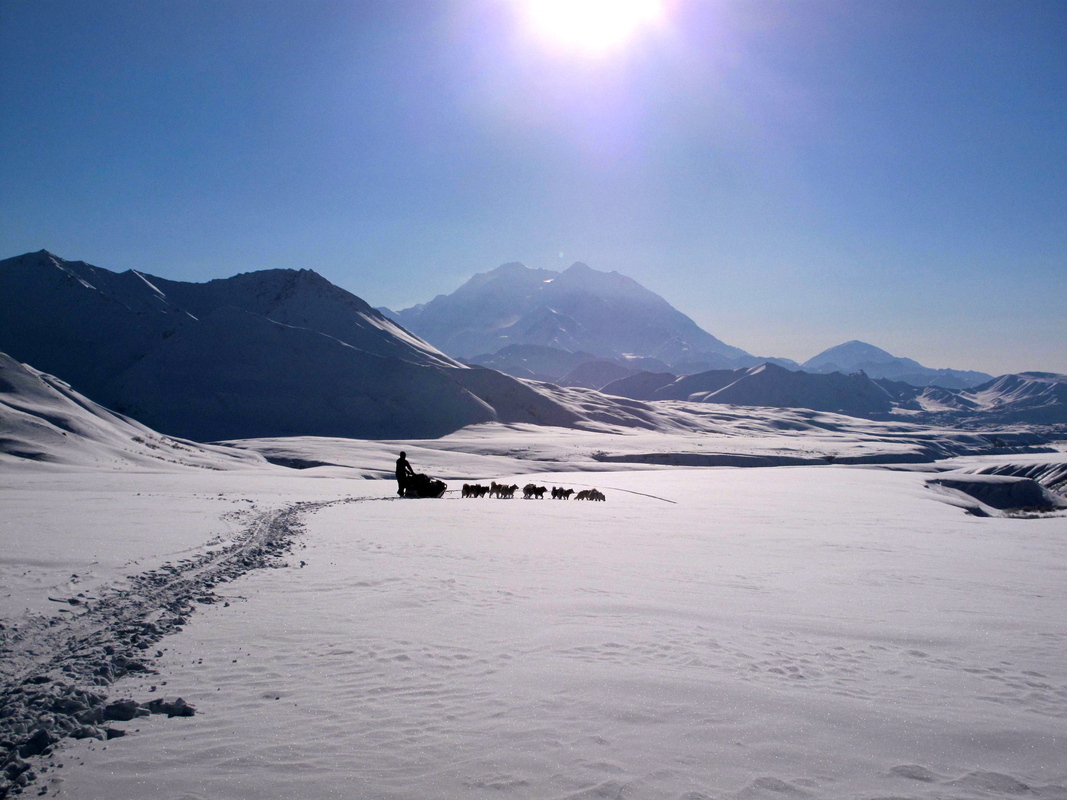As people around the United States gear up for the Super Bowl, Alaska is preparing for its own brand of competition, dog mushing. Every winter thousands of people take to their sled runners and harness up their dogs to enjoy the winter landscape. While Alaskans cannot claim to have invented dog mushing, the people of the 49th state have certainly embraced it whole-heartedly. Since 1972, Alaska has recognized dog mushing as its state sport, but well before mushing had any official recognition, it was shaping Alaska, one dog at a time.
Even before the first explorers came to North America, canines played a vital role within indigenous cultures. In 1732, when Russian trappers first set foot in what is now Alaska, they found Natives using dogs to move goods to hunting camps and between villages. These same trappers quickly adopted the same practice and began using dogs to hauling furs, supplies and people. As the years passed changes were made. The number of dogs in a team increased and the design of the sleds also began to change. What began as a utilitarian practice gradually started to resemble modern-day dog mushing.
In 1925, it was mushers and their furry companions that braved ground blizzards, deep snow, and unprecedented cold to deliver diphtheria serum to the isolated village of Nome. Setting a blistering pace, the 20 mushers and 150+ dogs were able to relay the medication; traversing the 651-mile route in just over five days. This amazing feat helped to transform mushers into myth and dogs into legend. Well before Balto became a household name, dog mushing was leaving its mark upon Alaska.
Until the mid-to-late 1920s, when airplanes started to become safer and faster form of transportation, dogs were the main method of moving goods and people throughout Interior Alaska. The Alaska Railroad did not fully connect Anchorage to Fairbanks until 1923. Even today, as people drive between Anchorage and Fairbanks on the Parks Highway, they are driving where dogs once tread. It was mushers, delivering mail and goods for the US Postal Service, who pioneered the route that was destined to become the Parks Highway.
Over the years, Alaskan’s love affair with dog mushing has not been without trials. As snowmobiles, also known as “iron dogs”, increased in popularity, more and more people began to forego their dog teams for the easier-to-maintain Skidoos and Bearcats. Thanks to people like Dorothy Page and Joe Reddington Sr. mushing continues to have a foothold in Alaska to this day. While the names “Page” and “Reddington” might not warrant immediate recognition outside of Alaska, it was these two individuals who began to dream of revitalizing the sport. In 1973, their dream was realized when the first Iditarod was held.
Perhaps the largest misconstrued belief about the Iditarod is that it was developed as a tribute to the 1925 serum run to Nome. While the routes of the two events do partially overlap and end in the same place, their influence on each other ends there. What has been termed, "The Last Great Race on Earth", was not created to re-enact the serum run, but rather to commemorate the freight route to Nome, known as the Iditarod Trail, and to pay homage to the role that dog mushing played in shaping Alaska. In the years since the Iditarod began, other dog races have taken hold in Alaska. The Yukon Quest, Kuskokwim 300 and Copper Basin 300 are run every year, just to name a few. Moreover, Alaska has become a “Mecca” for dog mushers and outdoor adventurers alike.
This winter mushers and dogs alike will brave the elements to take part in the sport that has become dog mushing. The mushers that take part in these races are attempting to carve out their own piece of Alaskan history, while the dogs are simply enjoying what they have been doing for thousands of years- running. Each year, as people around the world watch races like the Iditarod and the Yukon Quest unfold, We are reminded of where we have come from. These dog races are run to pay homage to the wilderness that they are run through, and in part to remember the people that pioneered the north long before it was named. But, perhaps we also love these races because they remind us that there is a little something wild in us all.




